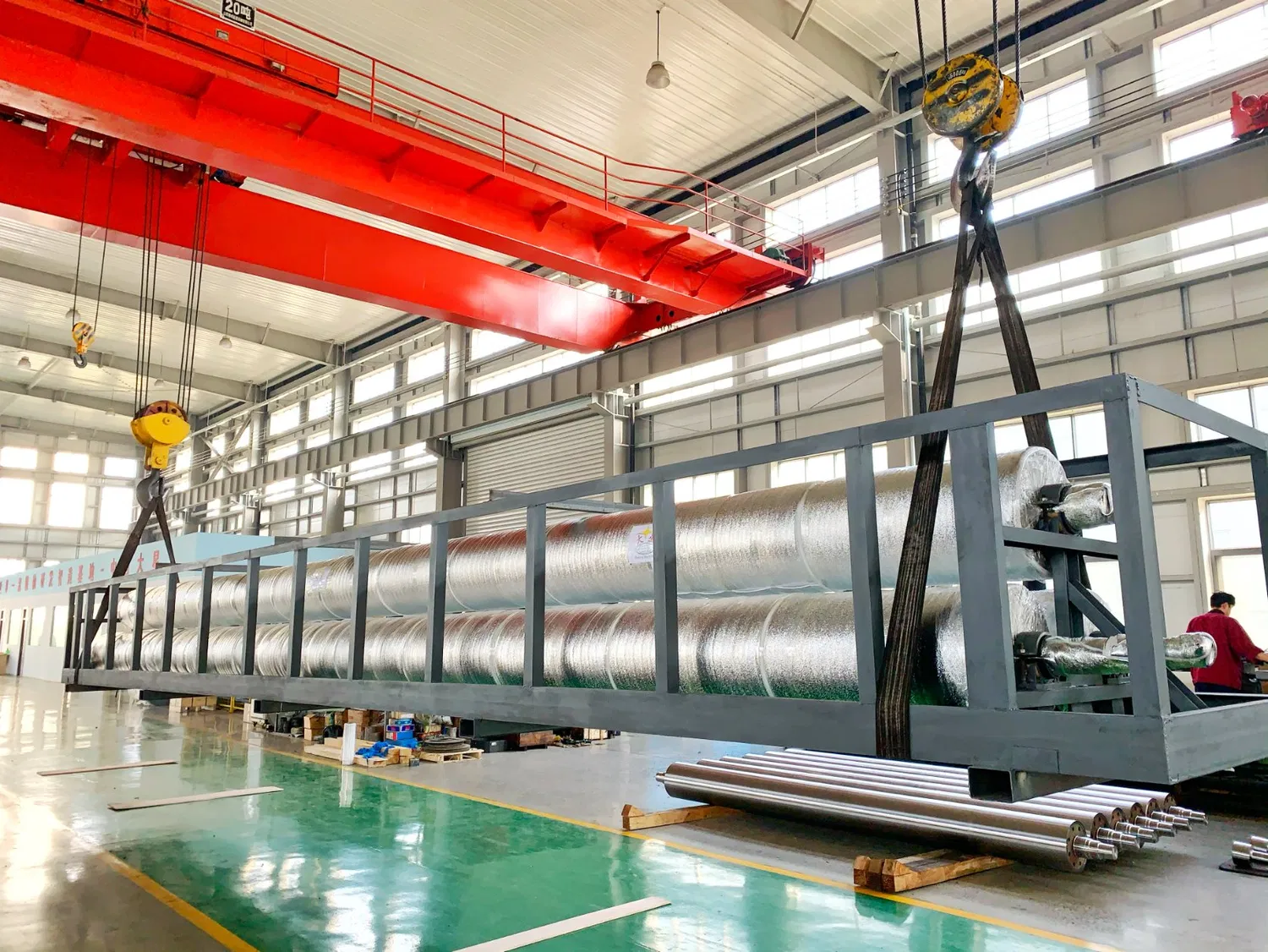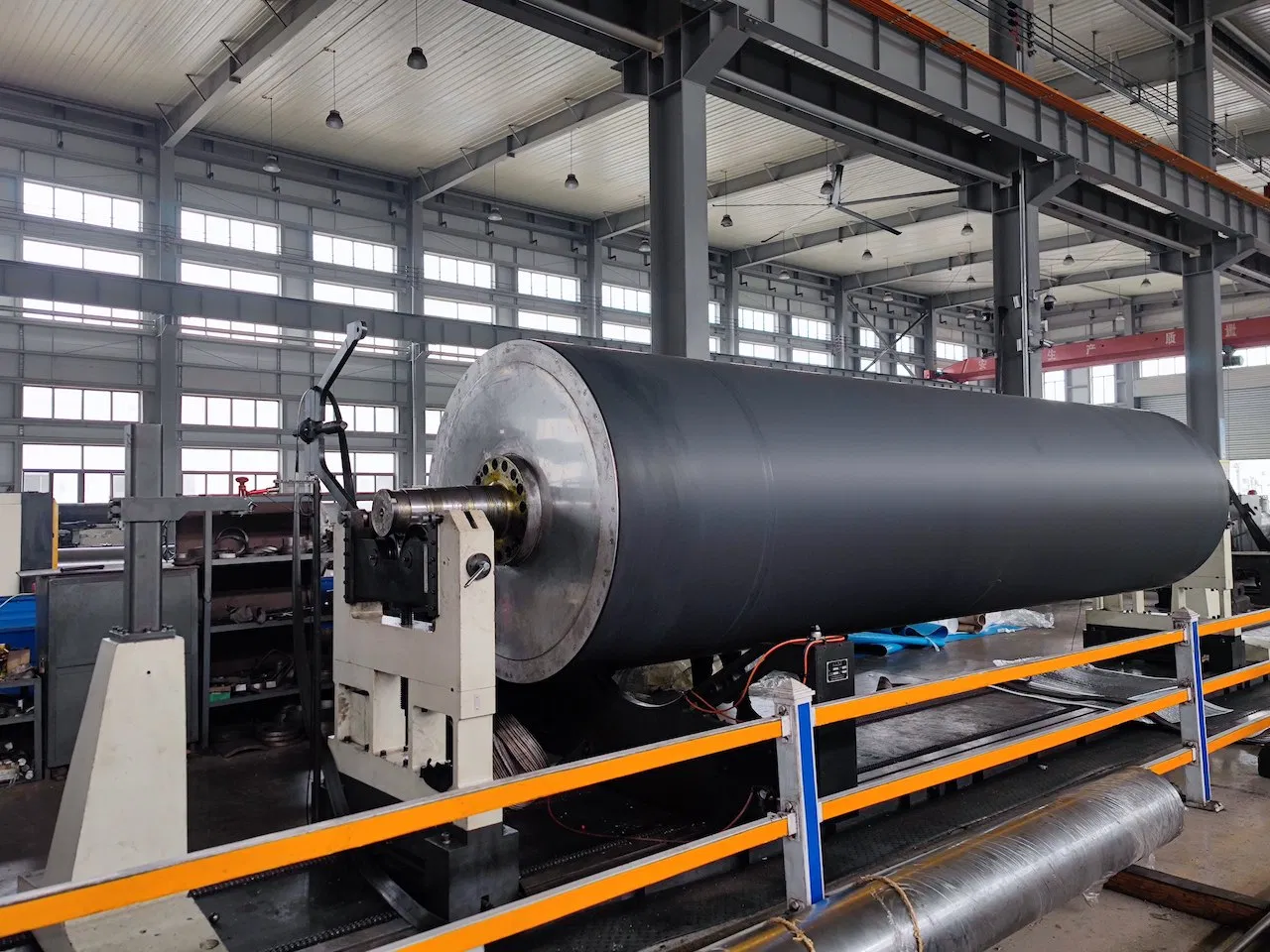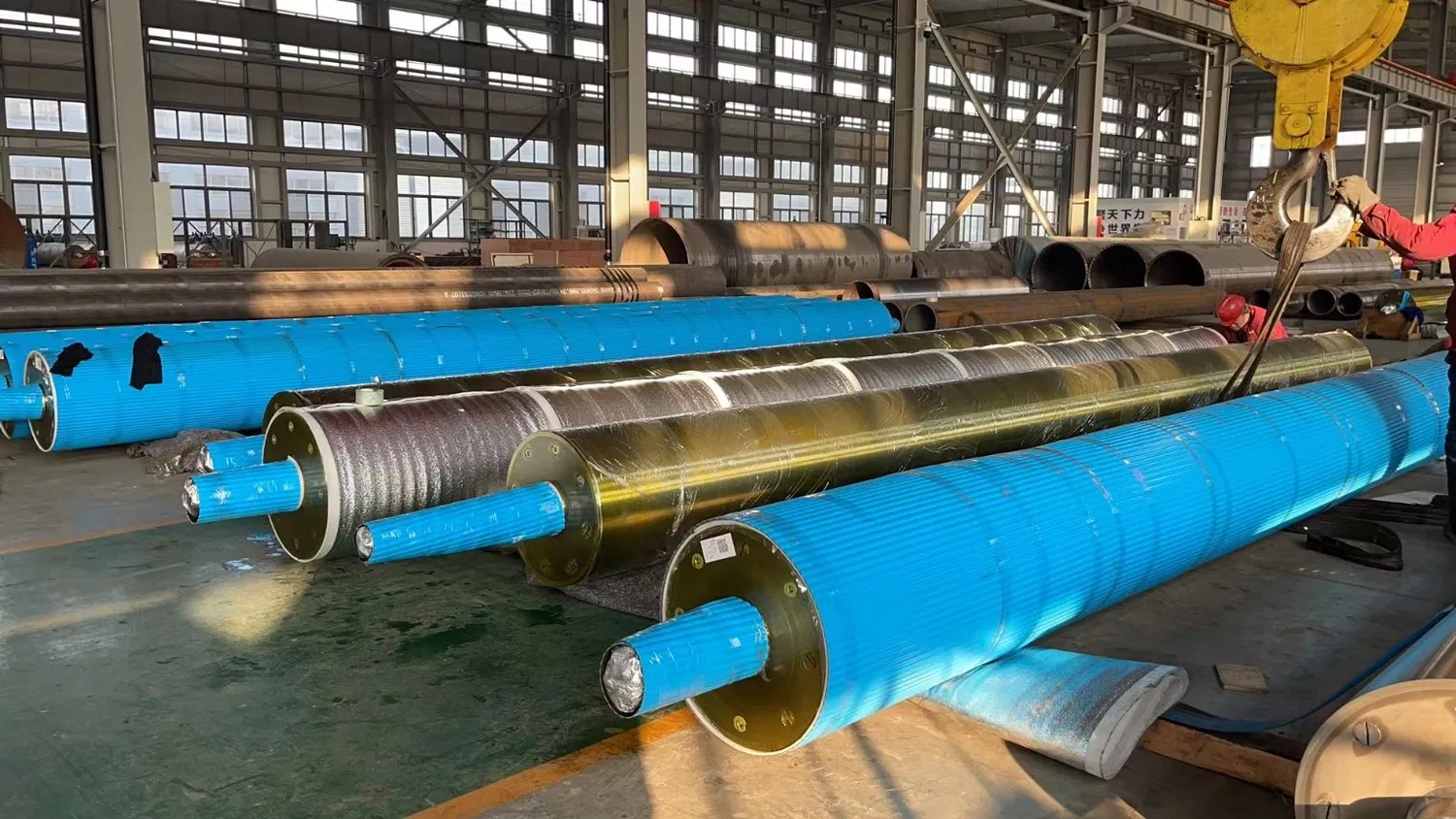In the intricate and demanding world of papermaking, the paper machine stands as a colossal testament to modern engineering. It's a symphony of moving parts, each performing a critical function with incredible precision and speed. Have you ever stopped to think about the sheer force and finesse required to transform a slurry of pulp into a perfectly uniform sheet of paper? At the very heart of this process are the paper machine rolls. They press, dry, guide, and finish the paper sheet, and to be honest, their performance directly dictates the quality of the final product and the efficiency of the entire operation. This is precisely why selecting the right Paper machine roll supplier isn't just a procurement task; it's a strategic decision that impacts your bottom line.
Many mill managers, in my experience, focus heavily on the larger systems, sometimes overlooking the profound impact of these cylindrical workhorses. A subpar roll can lead to catastrophic failures, unplanned downtime, and inconsistent product quality. Conversely, a high-quality roll from a reliable supplier can enhance efficiency, extend maintenance cycles, and improve the final paper product. This guide is designed to walk you through the essential considerations for choosing a supplier who is not just a vendor, but a true partner in your success.
Decoding the Different Types of Paper Machine Rolls
Before you can effectively evaluate a supplier, it's crucial to understand the diverse world of paper machine rolls. They aren't one-size-fits-all components. Each section of the paper machine requires rolls with specific designs, materials, and surface properties to perform its unique function. A knowledgeable supplier will have deep expertise across this entire spectrum.
Forming Section Rolls
This is where the magic begins. In the "wet end," rolls are responsible for dewatering the pulp slurry and forming the initial paper web.
- Breast Roll: Located at the beginning of the forming section, it supports the forming fabric as it receives the pulp slurry.
- Forming Rolls & Table Rolls: These rolls support the fabric and assist in water removal through a combination of gravity and suction.
- Couch Roll: This is a critical roll at the end of the forming section. It's typically a large, suction-type roll that transfers the fragile paper web from the forming fabric to the press section. Its design is vital for achieving the desired sheet dryness before the press.
Press Section Rolls
The press section's primary job is to mechanically squeeze more water out of the sheet, which is far more energy-efficient than thermal drying. These rolls operate under immense pressure.
- Suction Press Rolls: These have a perforated shell with an internal suction box to actively pull water from the sheet and the press felt.
- Grooved & Blind-Drilled Rolls: These rolls have surface patterns (grooves or non-through holes) that create channels for the pressed water to escape, preventing the sheet from re-wetting. The geometry of these patterns is a science in itself.

Dryer Section Rolls
After the press section, the paper sheet enters the longest part of the machine: the dryer section. Here, dozens of steam-heated cast iron cylinders, known as dryer cans, evaporate the remaining water.
- Dryer Cans: These are pressure vessels that must ensure uniform heat transfer across the entire roll face to avoid moisture profile issues in the final product. Their structural integrity and surface finish are paramount.
- Felt Rolls: These rolls guide the dryer felts that press the paper sheet against the hot dryer cans, aiding in heat transfer and supporting the sheet.
Finishing Rolls (Calender & Reel)
At the end of the line, these rolls give the paper its final properties.
- Calender Rolls: Stacked in a "calender," these highly polished rolls are used to control the paper's thickness, smoothness, and gloss. They require extreme precision in their geometry and surface finish.
- Reel Spool & Reel Drum: The reel drum drives the winding process, and the reel spool is the core onto which the finished paper is wound into a massive parent roll.
It's worth noting that a top-tier supplier will not only understand these types but will also be able to advise on the optimal materials and coatings (like rubber, polyurethane, ceramic, or tungsten carbide) for each specific application within your mill.
Key Qualities of a Top-Tier Paper Machine Roll Supplier
Now that we've covered the "what," let's dive into the "who." What separates an average supplier from an exceptional one? The difference lies in a combination of technical expertise, manufacturing capability, and a commitment to service. Frankly speaking, you're looking for a partner who can solve problems, not just sell parts.
Material Science and Engineering Prowess
The foundation of any great roll is the material it's made from. A premier supplier will have metallurgists and engineers on staff who understand the stresses, temperatures, and chemical environments each roll will face. They should be able to recommend the ideal core material, whether it's cast iron, steel, or a specialized alloy, and justify their choice. Furthermore, their expertise in roll covers is non-negotiable. The right rubber or polyurethane compound for a press roll can dramatically affect dewatering and service life. They should be able to discuss durometer (hardness), chemical resistance, and abrasion resistance with authority.
Customization and Precision Manufacturing
Every paper machine has its own unique characteristics. A truly valuable supplier doesn't just offer off-the-shelf solutions; they excel at custom roll manufacturing for paper mills. This involves:
- Tight Tolerances: The ability to machine rolls to incredibly precise dimensional and geometric tolerances (e.g., concentricity, cylindricity).
- Dynamic Balancing: As rolls operate at high speeds, even minor imbalances can cause intense vibrations, leading to barring in the paper and damage to bearings and machine frames. High-speed dynamic balancing is an absolute must.
- Crown Correction: Rolls deflect under their own weight and the immense pressures of operation. A supplier must be able to calculate and grind the correct "crown" (a slight convexity in the roll's profile) to ensure a uniform nip pressure across the entire sheet width.

Comprehensive Service and Support
The relationship shouldn't end once the roll is delivered. A leading supplier provides a lifecycle approach to their products. This includes offering robust paper machine roll maintenance services. Look for a partner who can provide:
- Roll Grinding and Recovering: The ability to regrind worn rolls to precise specifications and to strip and apply new covers.
- Journal and Head Repair: Expertise in repairing damaged bearing journals and roll heads, which is often more cost-effective than a full replacement.
- On-site Technical Support: The willingness to send engineers to your mill to help diagnose problems, take measurements, and oversee installations.
Proven Track Record and Industry Reputation
In this industry, reputation is everything. An established supplier will have a long list of successful installations and satisfied clients. Don't hesitate to ask for case studies or references from mills that produce similar grades of paper to yours. Their longevity in the business is often a good indicator of their reliability and the quality of their work.
The Hidden Costs of Choosing the Wrong Supplier
It can be tempting to opt for the supplier with the lowest initial quote. However, many experts agree that this is a short-sighted strategy that often leads to much higher costs down the road. A cheap roll is rarely a good value.
Unplanned Downtime: The Ultimate Profit Killer
This is the most significant risk. A roll failure, whether it's a bearing failure, a cover delamination, or a structural crack, can bring your entire multi-million dollar paper machine to a screeching halt. The cost of lost production during this unplanned downtime can quickly dwarf any initial savings on the roll itself. A single day of lost production can cost hundreds of thousands of dollars.
Inconsistent Paper Quality
Even if a subpar roll doesn't fail completely, it can wreak havoc on your product quality. Issues like poor roll geometry, incorrect crowning, or improper balancing can lead to:
- Barring and Chatter: Regular variations in the paper that make it unusable.
- Uneven Moisture Profiles: "Wet streaks" in the paper caused by non-uniform pressing or drying.
- Surface Defects: Blemishes caused by a deteriorating roll cover.
Safety Hazards and Equipment Damage
Let's not forget the most important factor: safety. A catastrophic failure of a large, high-speed roll is a massive safety hazard for your personnel. Additionally, the violent vibrations from a failing roll can cause secondary damage to expensive components like bearings, housings, and the machine frame itself.
How to Vet and Select Your Ideal Partner
Finding the right supplier requires a diligent and methodical approach. It's an investigation, not just a shopping trip. Here’s a practical framework to guide your selection process.
Start with a Technical Audit of Your Needs
Before you even contact a potential supplier, have a clear picture of your own requirements. What are the operating parameters for the roll (speed, load, temperature)? What have been the failure modes of previous rolls in that position? What are your goals for improvement (e.g., longer run times, better sheet moisture profile)? Having this data ready will facilitate a much more productive conversation.
Ask the Right Questions
When you engage with potential suppliers, go beyond the price and lead time. Dig deeper with questions that reveal their true capabilities:
- What is your quality control process from raw material intake to final inspection?
- Can you describe your dynamic balancing procedure and to what standard you balance?
- What kind of non-destructive testing (NDT) do you perform on roll bodies and journals?
- Can you provide technical data sheets for your proposed roll cover compounds?
- What is your warranty, and what does it cover?
- Who would be our primary technical contact, and what is their background?
- Can you provide references from mills that have used your industrial paper machine rolls in a similar application?

Beyond the Quote: Evaluating True Value
The final step is to evaluate the true value proposition. This means looking at the Total Cost of Ownership (TCO). A slightly more expensive roll from a top-tier supplier might last 30% longer and require less frequent maintenance. Over its lifespan, it will be significantly cheaper than a low-cost alternative that needs constant attention and replacement. Consider the supplier's engineering support, their maintenance services, and their commitment to partnership. These "intangibles" have very tangible effects on your mill's performance.
Forging a Partnership for Long-Term Success
Ultimately, the goal is to move beyond a simple transactional relationship. The ideal Paper machine roll supplier acts as an extension of your own engineering team. They bring specialized knowledge, cutting-edge technology, and a problem-solving mindset to the table. They understand that their success is intrinsically linked to yours.
By taking the time to thoroughly vet potential partners based on their technical expertise, manufacturing quality, service capabilities, and proven reputation, you are making a crucial investment. You are not just buying a steel cylinder; you are investing in reliability, quality, and the long-term profitability of your papermaking operation.
For more detailed information, please visit our official website:Paper machine roll supplier
About the author: John Carter is a veteran pulp and paper industry consultant with over 25 years of hands-on experience in mill operations and process optimization. He specializes in improving machine efficiency and reliability, with a particular focus on the critical interface between machinery and maintenance. John has helped dozens of mills across North America enhance their production quality and reduce costly downtime by implementing strategic equipment and supplier selection processes. He is passionate about sharing his insights to help the industry thrive.


